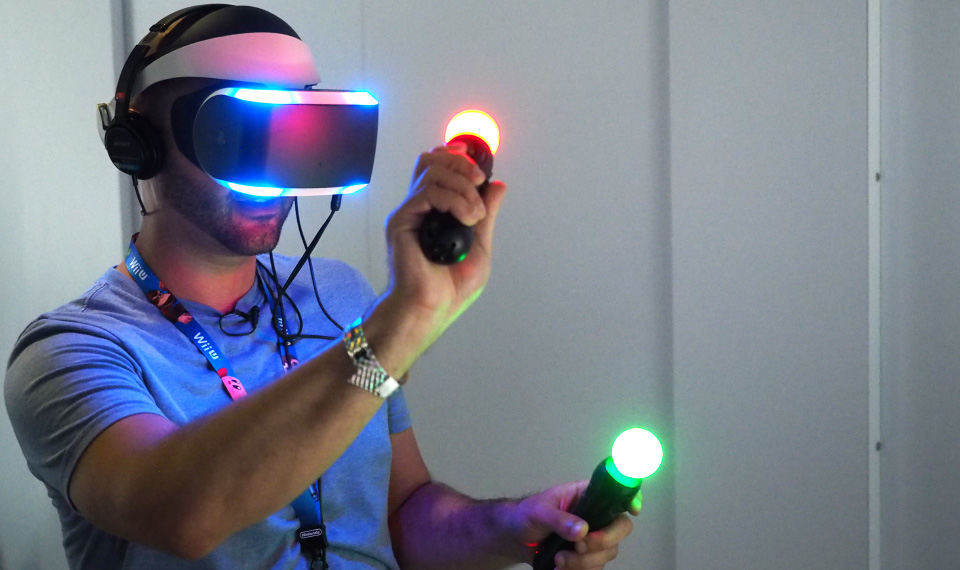With Oculus, PlayStation VR and others set to hit the market, 2016 is going to be a big year for virtual reality. Previous estimates indicated the industry is expected to see a big windfall over the next few years, but a new report from TrendForce indicates it’ll be even stronger.
The research firm estimates that the virtual reality market could grow $6.7 billion next year, per GamesIndustry International. That’s a staggering number, but the future estimate for 2020 is even bigger, to around $70 billion. That’s $20 billion accounting for hardware, and $50 billion based on games and applications.
TrendForce believes that a good portion of next year’s numbers will come from the hardware side, as people begin to show interest in the technology. “These explosive growth projections actually do not sufficiently reflect just how hot the VR industry is right now,” said Jason Tsai, a wearable device analyst for TrendForce. “The figures do not include the value of non-commercial uses of VR technology. For example, the industry is currently pushing the development of free software and do-it-yourself apps. While these projects do not immediately generate revenue for the developers, they have a vital role in the promotion market growth and innovations.”
Virtual reality has been ramping up extensively over the past few years, through companies like Marriott utilizing the technology, promotional tie-ins with movies and appearances at events, like this weekend’s PlayStation VR demonstrations during the PlayStation Experience event. One of the games from the event, Rez Infinite, is demonstrated below.
As for how virtual reality could succeed, TrendForce believes that social media will play a huge part, as user-generated VR content will push others to give it a shot even if it’s not “their thing,” per se. “The development of the VR industry is not solely based on wearable devices launched by major hardware vendors such as Sony, Oculus and HTC,” said Tsai. “Much of the growth drive also comes from independent developers that contribute innovative apps to the VR industry. Their market value is not often reflected in he data. Since making apps does not have a high entry barrier, there has been a proliferation of non-commercial software made by students, independent developers and content providers. Instead of being guided by immediate commercial interests, they aim to attract consumers’ attention with innovative products.”
Previous estimates pointed at the VR market only reaching around $30 billion by 2020, compared to augmented reality going as far as $120 billion. However, with the buzz surrounding upcoming gear like the PlayStation VR and Oculus, it’s safe to say that the excitement has definitely leaned toward VR’s favor.
Now it’s just a matter of approach, as finding a way to effectively market a virtual reality headset is sure to be a hefty challenge for some of these companies. Still, Oculus did pretty well with its previous press event, and also has the power of Facebook to back it up. Meanwhile, Sony can easily cater to its PlayStation 4 fanbase, considering more than 30 million people currently own the console which provides more than enough potential for PlayStation VR.
Let’s see where the future virtually goes from here.
Image source: Engadget

